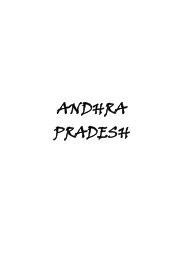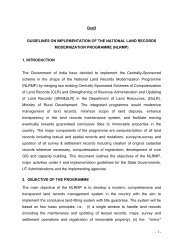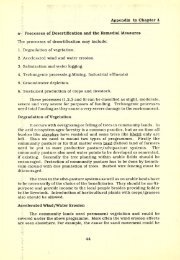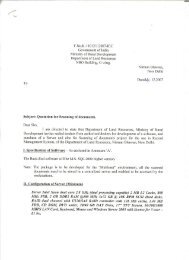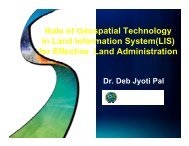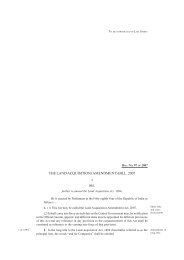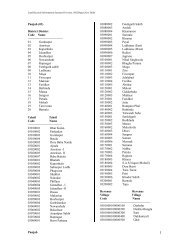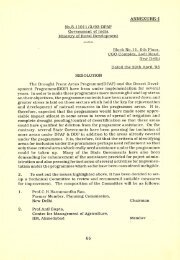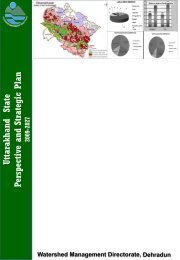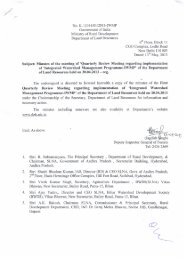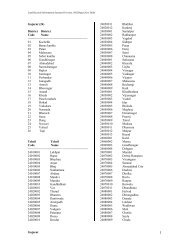Table 2 - Department of Land Resources
Table 2 - Department of Land Resources
Table 2 - Department of Land Resources
You also want an ePaper? Increase the reach of your titles
YUMPU automatically turns print PDFs into web optimized ePapers that Google loves.
LRISD, NIC(Hqrs)<br />
Under this series, we have undertaken the study with the help <strong>of</strong> State NIC-LR teams to<br />
devise standard codifications for following attributes/parameters at the national level.<br />
- Location<br />
- Crop Code<br />
- Season Code<br />
- Soil Type Code<br />
- Source <strong>of</strong> Irrigation<br />
- <strong>Land</strong> use<br />
- Area Unit/Extent<br />
- Ownership Code<br />
- Size <strong>of</strong> holding<br />
- Mutation type<br />
- Tenancy type<br />
- Encroacher type<br />
- Caste/Tribe<br />
- Gender<br />
- Encoding Standard<br />
2.1 Standard Coding scheme for Location<br />
2.1.1 Reference: Registrar General & Census Commissioner, India 2001 census<br />
2.1.2 Definition: Location code uniquely identifies a land parcel in the administrative<br />
boundary <strong>of</strong> the Survey and Settlement <strong>Department</strong>.<br />
2.1.3 Scope: The prime scope <strong>of</strong> the field is to identify the location <strong>of</strong> the land parcel.<br />
Register General & Census Commissioner, India is the nodal agency for conducting the<br />
census in India. One <strong>of</strong> the major initiatives taken in the Census 2001 was the allotment<br />
<strong>of</strong> Permanent Location Code Number (PLCN) to each and every village within the State<br />
and not within a tehsil as in the earlier censuses. PLCN was thus assigned as one<br />
continuous number from the first village in the first district to the last village in the last<br />
district. PLCN is an eight digit unique location code number with the first six digits<br />
representing the code number <strong>of</strong> the village and the last two digits depicting two zeros<br />
'00'. These zeros are reserved as buffer to be used for coding any new village(s) that may<br />
come up between two villages in future. For example, if a new village comes up between<br />
two villages with PLCNs 01254600 and 01254700, the new village will be allotted PLCN<br />
1254601 and so on.<br />
The State/Union Territory is represented by two digits each in the code. In the State level<br />
data, the first two digits denote the district. The next four represent taluk, tahsil, Police<br />
Station, development block, circle or mandal as is relevant to each State. The towns as<br />
well as the villages are represented separately through Permanent Location Code<br />
Numbers consisting <strong>of</strong> eight digits for villages and four for wards. Beginning with the<br />
NIC,DIT,MCIT,GOI 16




